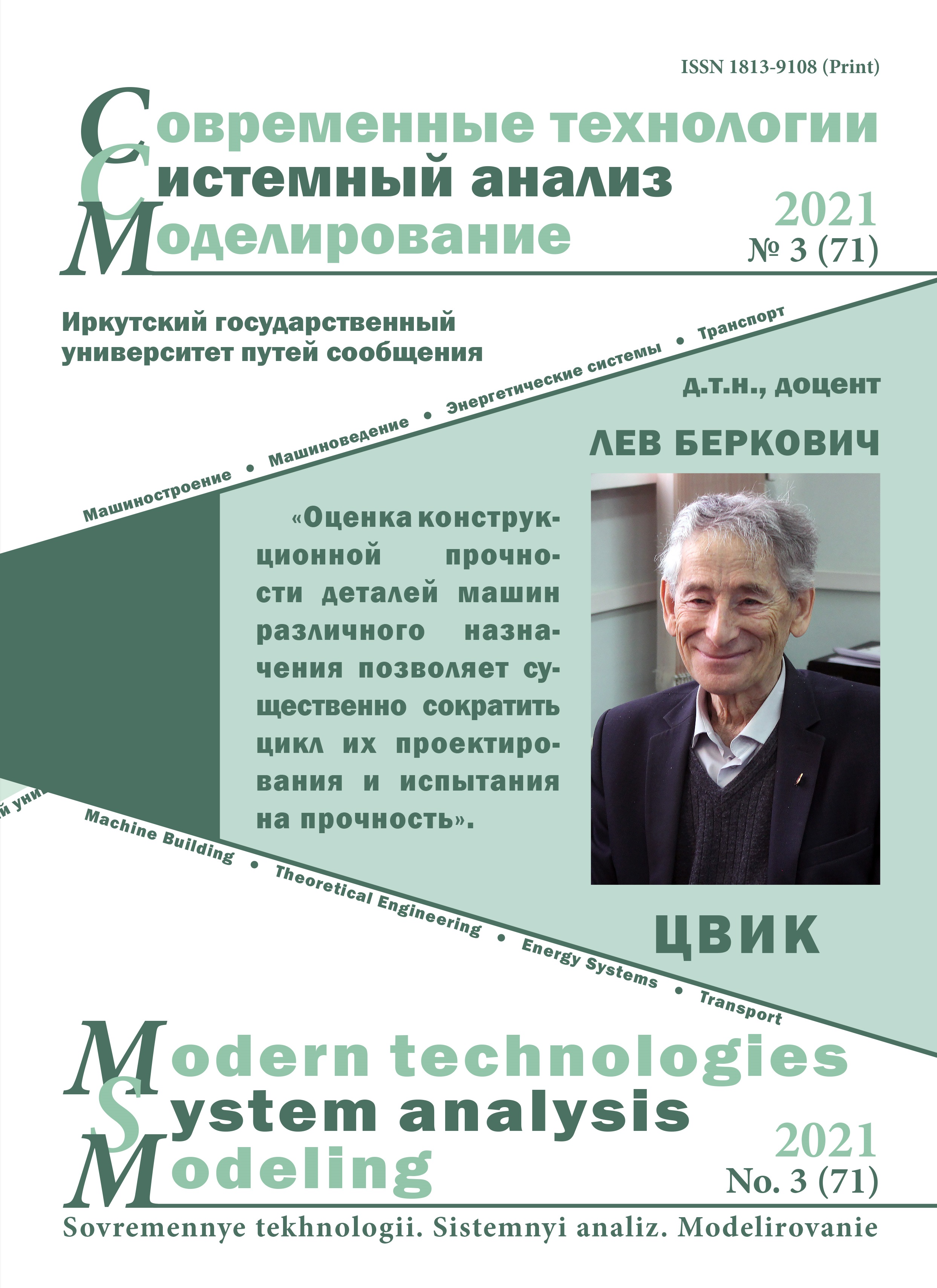Improvement of the locomotive life cycle support system
Keywords:
life cycle contract, life cycle, locomotive «Ermak», average daily mileage, repair organization, repair program, Fourier method, forecastingAbstract
Currently, the practice of applying a life cycle contract is spreading in Russia, which provides for the design, construction, purchase of products, their further maintenance, repair and disposal. 80 % of all projects implemented on the basis of a life cycle contract relate to the transport industry, but the contract is also successfully applied in the fields of healthcare, culture and sports. One of the first projects using the new concept is the purchase of high-speed «Sapsan» trains from Siemens by Russian Railways. Another example is the Moscow Metro, which has signed a contract with PJSC «Metrovagonmash» for the supply of rolling stock. As the world experience shows, the use of a long-term contract allows you to better plan your activities, makes it possible to optimize costs, makes the investment program and its payback period predictable. In addition, there is an opportunity to progressively and systematically develop their engineering competence, since as the failure statistics are analyzed, the supplied products are updated and modernized. This concept has been applied in the locomotive complex, within the framework of the contract for the supply of locomotives with the obligation to ensure their service, concluded between JSC «Roslokomotiv» and JSC «Russian Railways», the commissioning of new electric locomotives of the «Ermak» series has been organized. The contract provides for the participation of a repair company and a manufacturer in order to support the quality of products. The article considers the current organization of the locomotive life cycle support system, suggests the direction of improvement – the development of a scientifically based methodology for long-term planning of the repair program. With the use of information systems of JSC «Russian Railways», an analysis of the dynamics of the average daily mileage of 3ES5K of the registration of operational locomotive depots of the Far-non-eastern traction directorate was carried out – the influencing seasonal factors were considered, the growth trend was determined. A harmonic analysis is performed by the Fourier method and a function is proposed that describes the dynamics of the average daily mileage, considering seasonal fluctuations. The developed methodology will allow us to more accurately determine the need for locomotives for maintenance.
References
ГОСТ Р 83791-2010. Ресурсосбережение. Стадии жизненного цикла изделий производственно-технического назначения. Общие положения. Введ. 2011–01–01. М. : Стандартинформ, 201815 с.
ГОСТ 31539-2012. Цикл жизненный железнодорожного подвижного состава. Термины и определения. Введ. 2014–01–01. М. : Стандартинформ, 201414 с.
ГОСТ Р 56136-2014. Управление жизненным циклом продукции военного назначения. Термины и определения. Введ. 2015–09–01. М. : Стандартинформ, 201634 с.
Свод правил моделирования бизнес-архитектуры и бизнес-процессов ОАО «РЖД» : утв. распоряжением ОАО «РЖД» от 8 окт. 2019 г. № 2227р.
Регламент взаимодействия дежурного по эксплуатационному локомотивному депо, приемщика локомотивов дирекции тяги и диспетчера сервисного локомотивного депо в информационных системах ОАО «РЖД» : утв. распоряжением от 20 нояб. 2018 г. № 2438р.
Бернгард К.А., Фельдман Э.Д. Комплексная оценка развития пропускной и провозной способности сети железных дорог // Вестник ВНИИЖТ. 1983. № 4. С. 1–4.
Белецкий А.Н. Перевозочному процессу – высокую ритмичность // Железнодорожный транспорт. 1984. № 12. С. 17–21.
Баранов А.Л. Управление тяговыми ресурсами на Восточном полигоне // Железнодорожный транспорт. 2014. № 6. С. 25–31.
Сажин Ю.В. Катынь А.В., Сарайкин Ю.В. Анализ временных рядов и прогнозирование. Саранск : Мордов. ун-т. 2013. 192 с.
Химмельблау Д. Анализ процессов статическими методами М. : Мир. 1973. 957 с.
Пустыльник Е.И. Статистические методы анализа и обработки наблюдений. М. : Наука. 1968. 289 с.
Теория прогнозирования и принятия решений / С.А. Саркисян, В.И. Каспин, В.А. Лисичкин и др. М. : Высшая школа. 1997. 351 с.
Фенкель А.А. Математические методы анализа динамики и прогнозирования производительности труда. М. : Экономика, 1972. 190 с.
Shmueli, G. Kenneth C., Lichtendahl Jr. Practical Time Series Forecasting with R: A Hands-On Guide (Practical Analytics). International Kindle paperwhite, 2016. 232 p.
Chatfield C. Time-Series Forecasting. USA : Chapman and Hall/CRC, 2001. 280 p.
Bisgaard S. Kulahci M. Time Series Analysis and Forecasting by Exampl. USA : Wiley, 2011. 400 p.
Harvey A. Forecasting, Structural Time Series Models and the Kalman Filter. London : Cambridge University Press. 2014. 676 p.
Дьяконов В.П. Maple 10/11/12/13/14 в математических расчетах. М. : ДМК Пресс. 2011. 800 с.
Дьяконов В.П. Энциклопедия компьютерной алгебры. Mathcad, Maple, Mathematica, Drive, MuPAD. Аналитические и численные вычисления и их визуализация. Сотни примеров математических расчетов. М. : ДМК Пресс. 2010. 1268 с.
ОАО «РЖД» Нормы межремонтных пробегов железнодорожного подвижного состава, эксплуатируемого на инфраструктуре: утв. распоряжением 11 августа 2016 г. № 1651/р.
Электровоз магистральный 2ЭС5К (3ЭС5К, 4ЭС5К). Руководство по эксплуатации. Кн. 8. Техническое обслуживание и ремонт. Новочеркасск. 2019. 291 с.
Электровоз магистральный 2ЭС5К (3ЭС5К, 4ЭС5К). Руководство по эксплуатации. Кн. 1. Описание и работа. Электрические схемы. Новочеркасск. 2006. 251 с.
Методика расчета потребности в заводских и деповских ремонтах локомотивов ОАО «РЖД». Расчет Р1881 РР : утв: распоряжением от 6 февр. 2019 г. № 198р.


